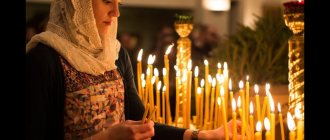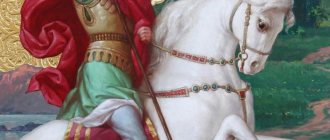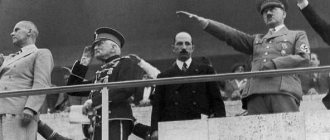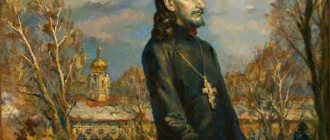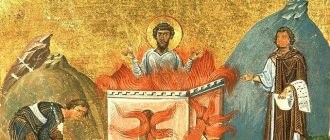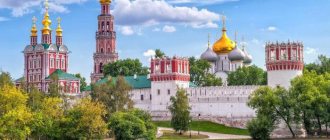Antioch of Pisidia, the former capital of ancient Pisidia, is located in central Anatolia, northeast of Lake Egirdir. Both Antioch and Egridir are important points on the famous pilgrimage route - the path of the Apostle Paul. In one of his travels, Paul, leaving Perge, walked a difficult path through the mountains and steppes and reached Antioch of Pisidia (there were more than a dozen cities with the name “Antioch” in the ancient world, so the specification “Pisidian” or “Antioch in Pisidia” is mandatory) .
During our trip to Central Anatolia we visited several ancient cities. All of them were very different, although they had mandatory attributes, such as a theater on a mountain slope, necropolises, temples, and agoras. But the terrain and relief and their combination with the majestic ancient buildings each time created a separate, unique masterpiece.
We couldn’t miss Antioch of Pisidia either.
City `s history
The city was founded in the 3rd century BC. Hellenistic ruler Seleucus and named him in honor of his father. When the Romans occupied these lands, they first handed over this city to their allied Pergamum. And when the city came under the direct control of the Romans as part of the province of Galatia, the Roman colony of Caesarea was founded here, where veteran legionnaires began to settle.
An important trade route, Via Sebaste, passed through the city, which attracted Jewish traders here. The Jews had a synagogue here, and it was to them, members of the local Jewish community, that Paul went to preach the teachings of Christ. And then the pagans began to gather at his sermons. It is believed that it was in Antioch of Pisidia that the Apostle Paul first began to preach to the pagans.
The Jewish community soon expelled Paul and the apostle Barnabas, who accompanied him, but Paul subsequently visited here twice more.
During the Byzantine period there was a bishopric in the city. When the Turks came here, they founded their city of Yalvach somewhat to the side, and the old city was gradually abandoned.
Literature
- Nikephoros Bryennius
Historical notes (976-1087) (inaccessible link) - Smbat Sparapet
. Chronicle / Transl. from ancient Armenian; preface and note. A. G. Galstyan. Yerevan: Hayastan, 1974. - Brun S.
P. Romans and Franks in Antioch, Syria and Cilicia XI-XIII centuries. M.: Maska, 2015. Volume I—II. - Stepanenko V.P.
The State of Filaret Varazhnuni (1071-1084/86) // Antiquity and the Middle Ages. Sverdlovsk, 1975. Issue. 12. pp. 86-103. - Stepanenko V.P.
On the dating of the seal of Tavtuk, proedr and katepan Samosata // Antiquity and the Middle Ages. 1995. Vol. 27. pp. 58-62. - Yahya Antioch
Chronicle (extracts) - Bouchier Ed. S. A short history of Antioch: 300 BC-AD 1268. 1921.
- Downey G.
A history of Antioch in Syria: from Seleucus to the Arab conquest (inaccessible link). Princeton University Press, 1961. - Downey G. Ancient Antioch. Norman, 1963.
- Liebeschuetz JHWG Antioch: City and Imperial Administration in the Later Roman Empire. Oxf., 1972.
- Wallace-Hadrill DS
Christian Antioch: a study of early Christian thought in the East. 1982. - Cribiore R. The School of Libanius in Late Antique Antioch. Princeton: Princeton University Press, 2007.
- Kurbatov G.L. The main problems of the internal development of the Byzantine city: (Antioch in the 4th century). L., 1971.
- Antioch-on-the-Orontes: The Excavations. L.; Princeton, 1934-1972. Vol. 1-5.
City tour
Unfortunately, the stones of ancient Antioch were largely used to build the new Turkish city. But what remains is enough to understand what ancient Pisidian Antioch was like.
The city was located on a wide plateau and was slightly elevated above the surrounding area. At the same time, the territory of the city itself is quite flat.
To the north rise low mountains, from where an aqueduct stretched to the city. The remains of the aqueduct have been preserved.
Entrance to the archaeological zone costs 10 liras. The museum is open from 8-00 to 19-00.
Gates
The museum office is located at the western gate, through which we entered the city. The gate itself has not survived, but you can understand what it was like from the foundations and modern drawings.
This is what the gate looks like now
and so in ancient times
A wide road leads from the gate into the city, along which shops and stores used to be located. Here and there you come across the remains of columns and bas-reliefs.
City streets
The road ends at Cardo Maximus. She, as expected, intersects with Decuman Maximus.
As you know, Roman cities were built according to a regular plan, where the cardos were oriented from north to south, and the decumans were oriented from west to east.
Cardo Maximus herself
New articles here Other articles: European Union after Brexit. The stronger the kisses, the less money Non-Silk Road of the Black Sea region “European Dream” of Ukraine Consolation project of the “Eastern Partnership” “Eastern Partnership”. The end of the anti-European project of Europe is Adjara. "Pearl of Georgia". Bulldozer on geopolitics World tourism industry “Golden era” of Sino-British relations Great Maritime Silk Road Silk Road of Greater Eurasia. Chinese superproject of the century Immanuel Kant. The traveler who discovered the Great Ocean, the shores of which no one has yet been able to reach. Western geopolitical outpost of Russia Why did the European integration “Drang nach Osten” fail? A journey to nowhere between St. Petersburg and Moscow Alexander Radishchev. The father of Russian liberals who do not love the Motherland The First World Religious War Ukraine. Third Ruin. The national idea of who to lie under and its consequences The explosive “gray zone” of Europe Russian “imperial” geopolitics Eastern Europe in an era of global instability The end of Chinese geopolitics “artfully keeping a low profile” European Union. The only way from the top is down. The red-hot frontiers of Europe. American geopolitics of exceptionalism and “enlightened” cynicism. Geopolitical era of global instability. On the main fronts is Bulgaria. From the defense of Shipka to the new Turkish protectorate? Near East. Syria. Turkish-Syrian centuries-old conflict Middle East. Kurdistan Middle East. Iraq. Consequences of American aggression Betrayal of the Arabs by the great European powers Islamic civilization. The ideology of pan-Islamism. Religious conflict Great Antioch. Outpost of Christianity. Homeland name “Christians” Explosive geopolitical problems of Turkey Turkish geopolitics. The doctrine of “zero problems with neighbors” and Realpolitik Ukraine. Country of labor migrants "Baltic Tigers". Pawns and puppets on the geopolitical chessboard of Moldova. Association with the EU. Time to sum up the first results Professor Vladimir Dergachev. On the 70th anniversary of the birth of the Geopolitical consequences of the crisis in Greece, Republic of Macedonia. The Empire of Alexander the Great, not recognized by Greece. Global geopolitical transformation of the ancient world __________ World geopolitical tsunami of separatism Pirate geopolitical technology of “controlled” chaos Evenings on the Farm near Europe and Russia Geopolitical transformation in the Black Sea region Lost battle for the World Ocean Geopolitics of the World Ocean The Great Hour of the Oceans The State is created by the Ruler and the Song The Great War. Europe's first fatal heart attack, Mount Athos. Monastic state of the Holy Mountain Unlearned lessons of Crimea Odessa Khatyn. European integration in Ukrainian style Democratic “Anaconda loop” in the steppes of Ukraine New regionalism Why has the “Dead Hand” been resurrected? India. The world's largest democracy Battle for Eurasia. Tectonic geopolitical transformation Great Ukrainians on choosing a path Virus of nationalism Crimean frontiers of hostility and peace Who will own Eurasia? Superproject of the century Main geopolitical events of the Peloponnese. The message of the ancient Greeks to the modern world Knowledge is a geopolitical force and a strategic resource of the state Why do terrorist attacks not stop under the best president in the world? Russia is modernizing its armed forces. The Third Ruin in the history of Ukrainian statehood. Kiev Maidan and the Fifth Column of the West. Ukraine. European time-out Towards a new system of regional security in the South Caucasus The Great Helmsman Ghost towns in the service of Chinese geopolitics Global invasion of the Chinese Immoral desire for the “rich belly” of the West Deadly extensive heart attacks in Europe European protectorate of America When will the “Decline of Europe” come? The specter of communism haunts Europe Why are the West and Russia going crazy in different ways? Geopolitical transformation of Latin America Venetian “empire” of fortitude and spirit of profit> Death of the world secret empire Secret superpower “Patriots” who robbed Russia Red Africa. “Bloodthirsty” neo-colonialism of China American angel of chaos on the African continent Lunch in a tavern at a political cemetery Slovakia. Country of successful “Europeanization” Country of eternal European integration pregnancy Post-Soviet Baltic. Where did the Baltic tigers disappear to? Caucasus. “Solar Plexus” of Eurasia Is a Eurasian marriage possible due to love or misfortune? Eurasia in search of the Eurasian Union Central Asia on the Eurasian frontiers of hostility and peace 2012. Main geopolitical events The party as the helmsman of a criminally corrupt government The crisis of Russian statehood Excessive triumph of Russian “modernization” Ukraine in the new geopolitical architecture of the world Eastern Europe in the new geopolitical architecture of the world Multi-partner geopolitics of Turkey "Elite in Law". The seduction of wealth The strategic impasse of Russia From Ilyich’s light bulb to oligarchic capitalism, which Russia is “not a big deal” Imperial geopolitics. Great hour of world empires __________ Accurate shooting past lost targets Systemic crisis. Deadly mistakes of the Soviet regime The fall of the Soviet superpower. The prophet is not in our fatherland, the zone of communism. University Temple of Science and Education The Great Hour of the Superpower. The birth of a knowledge-intensive industry. The great hour of a superpower. Secrets of the Atomic Project The Great Hour of a Superpower. Union of Soviet power and fundamental science Architecture of the post-war world order. Soviet geopolitics. Molotov-Ribbentrop Pact Geopolitical throws beyond the horizon. World revolution Great Victory. Cruel pragmatism of tough times (III) Great Victory. Logic and psychology of war (II) Great Victory. Strength of spirit (I) “Angels” of the orange revolt and schismatics of canonical Orthodoxy The Great Troubles. “Chernobyl of the soul” Why is Russia not Scandinavia? European Japan Kingdom of communist life Great statesman (on the 280th anniversary of the birth of Empress Catherine the Great) World war for the souls of people Dizziness from the loneliness of a superpower Collapse of the myth of the fabulous Euroland NATO dreams Golopuzenko The Great Path “Tears of Allah” Mazepa. European knight or damned Poles? “Man of the Century” about choosing a path, “wild and exciting” Ukrainization How to “not become a litter for other nations”? The last hetman of Ukraine on choosing a path Testament of the immortal Gogol The main geopolitical resource of Russia The origins of the crisis of Ukrainian statehood The struggle of nationalists for the “living space” of Soviet Ukraine “Ukrainian breakthrough” to the default of statehood. The Third Ruin The Black Sea Snake Island in the mirror of geopolitics Ways to overcome the default of Ukrainian statehood
Theater
To the left of Cardo Maximus you can see the remains of a theater
Square and Temple of Augustus
The street leads to the wide and solemn Square of Augustus, in the depths of which the remains of the Temple of Augustus have been preserved. This area was cut into the rock. And this place, perhaps, impressed me most in this city.
ruins of the Temple of Augustus
and this is how it looked in ancient times
Near the square there are the ruins of the so-called “central church”.
Forum
From this church there is a Decuman, ending in a forum (market square), where there was a fountain (nympheon).
Decuman
ruins of nympheon
and this is what a nympheon looked like in ancient times
Baths
Baths were located nearby. What is a Roman city without baths? Their ruins are, as always, impressive.
But little remains of the northern church.


